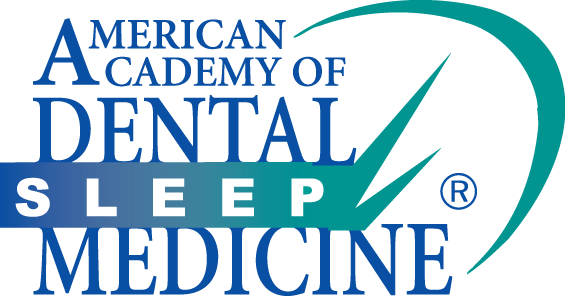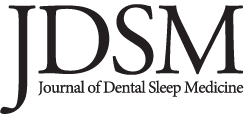
Editorial 1, Issue 12.3
Accelerated Titration and Temporary Oral Appliances: Expanding the Clinical Toolkit for Sleep Dentists?
http://dx.doi.org/10.15331/jdsm.7398
Jean-François Masse, DMD, MSc, FACD, Diplomate, ABDSM
Editor-in-Chief Journal of Dental Sleep Medicine
Universite Laval, Quebec City, Quebec, Canada
“We desperately need a method to quantify mandibular advancement splint (MAS) effectiveness short of making the device for each patient and then determining if it works.”
— Dr. David White, Pulmonologist, Harvard University, 20131
Although Dr. White made this observation over a decade ago, his words remain strikingly relevant in 2025. The medical community still demonstrates a great interest in the field of temporary dental appliances.
The market for temporary oral appliances (OA) for the treatment of snoring and sleep apnea has evolved slowly with often mixed outcomes.2 However, more recent studies—such as Pépin et al. (2019)—have demonstrated that, although they are not intended for long-term use, these devices may not be inferior to custom-made appliances in terms of effectiveness.3
A Historically Marginal Solution
Temporary OAs—often of the “boil and bite” type—have long been sidelined by dentists practicing dental sleep medicine. They were generally used as transitional tools, during the fabrication or repair of a permanent appliance4,5 but seldom used as a less expensive first step trial appliance. This reluctance stems from several clinical and administrative uncertainties:
- Even though a temporary OA can be considered non-inferior to custom-made appliance, does failure with a temporary OA can always predict failure with a custom-made device?
- Could the discomfort sometimes experienced with a temporary appliance dissuade patients from moving forward with a custom-made appliance, even when the treatment is clinically effective?5,6
- The main challenge lies in the duration of treatment when using a temporary appliance as a titration tool to identify responders to oral appliance therapy. If the dental sleep medicine provider anticipates seeing the patient multiple times over several months, it raises the question: why use a temporary appliance at all? The cost difference between a temporary appliance and the lab fee for a custom-made one is often only around $400. In that context—and assuming the same clinical fees apply minus the lab cost—it may be more logical to proceed directly with a fully custom treatment. Otherwise, the clinician goes through the same process using a lower-cost device that may reduce the chances of success, particularly if patient comfort cannot be ensured over the titration period.
- Moreover, determining an appropriate pricing model becomes difficult when the titration period extends over several weeks and ultimately results in treatment failure. In cases of partial success, the patient can continue using a custom-made appliance for years, while a trial device is not designed for long-term use.
A Shift in Paradigm
An abstract presented at the 2025 AADSM conference proposed a titration protocol completed within one week.7 If replicated, this protocol for custom-fit appliance could paradoxically make temporary OAs more attractive than before as a treatment tool—clinically and financially by reducing the time used for titration. If managed carefully, quickly identifying OA therapy responders could allow for a broader access for patients to the treatments we offer. And such a fast-track approach may also open the door to innovative combination therapy strategies.
The Impact of GLP-1 Agonists: A New Target Population?
The SURMOUNT-OSA study showed that 50.2% of patients initially dependent on CPAP no longer needed it after one year of treatment with ZepBound (tirzepatide).8 In other words, nearly half of these patients still require treatment despite significant weight loss. These individuals may represent an ideal population for initial trials with temporary OAs, rather than an immediate return to CPAP.
The growing role of GLP-1 agonists in managing sleep apnea demands that our profession anticipates their clinical implications and adapts accordingly.
A Long-Ignored Medical Demand
As I said before, for years, many physicians have expressed the desire to have a trial period with an oral appliance – unlike CPAP most of the costs for the appliance are incurred upfront. Temporary OAs, if properly supervised, could meet that demand. This could also offer a safer alternative for hesitant patients who might otherwise turn to mail-order devices, heavily promoted directly to patients. Many patients may pay for a better, more expensive appliance provided they know it will solve their problem while controlling for potential side effects they may encounter with over-the-counter appliances.Still, it must be acknowledged that some patients, less tolerant of initial discomfort, may prematurely abandon the therapy, which could unfairly discredit the therapy.6,9,10 Patient selection will therefore become a key consideration—this option may be reserved for those with a strong likelihood of adapting successfully. Even so, this approach may allow us to serve more patients, accepting that some failures will stem from poor therapeutic matching. Nothing is perfect.
What Clinical and Financial Models Could Be Adopted?
Integrating these devices into care delivery could be explored using several various models such as offering temporary appliances as a separate service to custom-made appliances; dividing services into two phases - a trial phase and a treatment phase, or offering a global service that includes both a temporary and custom-made appliance.11,12,5 These models deserve to be considered and researched —just like the clinical benefits of accelerated titration protocols.
Conclusion
Thoughtful integration of temporary OAs—supported by accelerated titration protocols and evidence-based patient selection—could transform our approach to dental sleep medicine. Doing so will require coordinated adaptation to emerging scientific data and practical realities.2,3 The time has come to consider that temporary devices could be more than a transitional solution, potentially becoming a true therapeutic entry point.
REFERENCES
- White DP. Continuous positive airway pressure versus the mandibular advancing splint: are they equally effective in obstructive sleep apnea management? Am J Respir Crit Care Med. 2013;187(8):795-7.
- Adame JM, Cantwell M, Le JQ, Richardson SE, Schumacher C. Temporary mandibular advancement devices: a review of the evidence and clinical applications. J Dent Sleep Med. 2023;10(1):45-52.
- Pépin JL, et al. Heat-moulded versus custom-made mandibular advancement devices for OSA: a randomized non-inferiority trial. Eur Respir J. 2019;53(3):1801184.
- Goossens K, et al. Prefabricated versus custom-made mandibular advancement devices in obstructive sleep apnea: a systematic review and meta-analysis. Sleep Med Rev. 2025;71:101749.
- Sharma S, et al. Mandibular advancement devices for obstructive sleep apnea: Current status and future directions. J Indian Prosthodont Soc. 2013;13(3):163-170.
- Manetta IP, et al. Prefabricated versus custom-made mandibular advancement devices for OSA: A systematic review. J Oral Rehabil. 2022;49(7):712-721.
- Tozzer JP, Bajwa EK. Rapid titration protocol for temporary mandibular advancement devices. Presented at: American Academy of Dental Sleep Medicine Annual Meeting; 2025.
- Malhotra A, et al. Tirzepatide for the treatment of obstructive sleep apnea and obesity: the SURMOUNT-OSA phase 3 trial. N Engl J Med. 2024;390(23):2218-2230.
- Johal A, et al. Ready-made versus custom-made mandibular advancement devices for obstructive sleep apnoea: a randomized crossover trial. Eur J Orthod. 2017;39(2):134-141.
- Manetta IP, et al. Compliance and side effects of mandibular advancement devices. J Oral Rehabil. 2022;49(7):712-721.
- MedsDental. Billing models for dental sleep medicine: Current trends and challenges. MedsDental White Paper. 2024.
- apZme/Sleep Impressions. Medical billing integration in dental sleep medicine. Sleep Impressions. 2024.
CITATION
Masse, JF. Accelerated Titration and Temporary Oral Appliances: Expanding the clinical toolkit for sleep dentists?. J Dent Sleep Med. 2025;12(3)SUBMISSION AND CORRESPONDENCE INFORMATION
Submitted in final revised form July 8, 2025.
Address correspondence to: Jean-François Masse, DDS, MSc, FACD, D.ABDSM, Professor, Universite Laval, 2780 Masson #200, Quebec City, QC, G1P 1J6, Canada; Tel: 418871-1447; Fax: 418-871-4983; Email: jean-francois.masse@fmd.ulaval.ca
PDF
